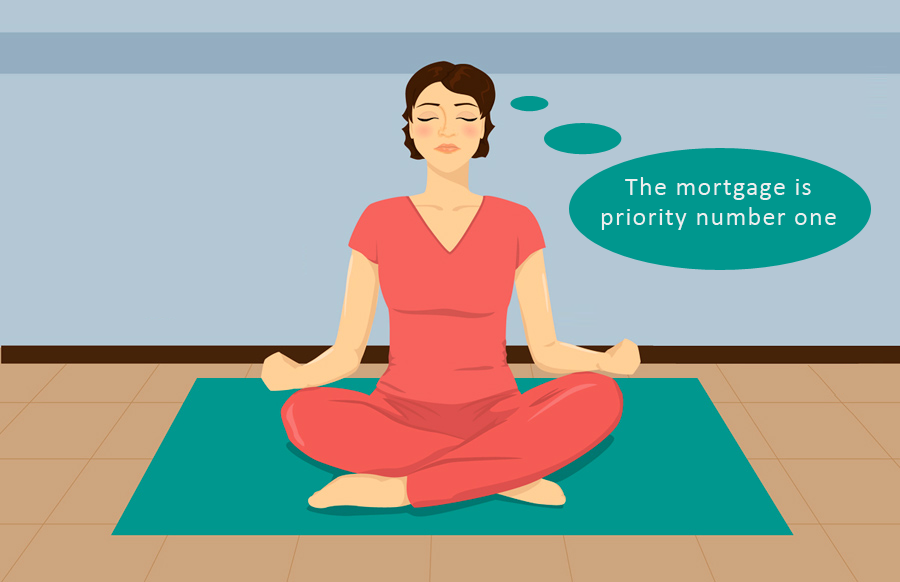For today’s post I thought I’d go through a detailed use case I feel will apply to many people starting out in the mortgage and debt world not knowing what’s what and how much they should be putting towards their mortgage.
For the benefit of this article I’m not going to go into whether it’s a unit, a town house or a 10 acre block of land that’s been bought, just that once all is said and done the person has ended up with a mortgage around the $300,000 mark and wants to pay it off as quickly as possible (as this is Mutilate The Mortgage after all). To add to that, a few more details:
- Income: Single Income At $80,000
- Mortgage: $300,000
- Deposit: $30,000
- Age: 25
So now that the base info is out of the way I’m going to go through the main steps that our test subject can do to make sure that they’re getting ahead as much as possible with their loan. From their mental attitude to tracking and finally to specific financial plans, I hope this detailed case study helps guide others in a similar position as to “what to do” when starting out. I’ve often found that explaining principles is good, but it can never properly replace worked examples.
Also, please don’t get hung up on the starting details above. I can already hear the complainypants going on about how “they earn too much” or that “the loan is too small“, I have chosen a manageable loan size for the income level stated. If you’re on a single $50,000 income and have a $500,000 loan then obviously it’s going to take forever to pay back.
This isn’t anyone’s fault except yours for getting into too much debt. What you can do though is still apply the below information and pay it off sooner rather than later, you can also downgrade ;-)
Table of Contents
Figure Out What Makes You Happy; Cut Everything Else
This isn’t just a plan to get from home to the super market, this is something they will likely be adhering to for the next 5-10 years (albeit with some minor modifications no doubt). It has to be realistic and must budget for happiness. This is of course different for everyone but for this test case they want to always have the below money available so they don’t go bonkers.
If they are extra good and don’t use it, then it goes towards the mortgage, but this is part of something called “conscious spending” and there is an extremely good (and detailed) article on it here. Simplified, it boils down to choosing the things that make you really happy, and then spending money on them whilst brutally cutting back on everything else.
For example you might buy 10 pairs of shoes a year and like shoes… but you LOVE travel. The solution? Buy no shoes and spend some money on Travel, this way you are still happy but you are also savings money. For our test case I’ve made up the following things that they truly care about doing:
- Travel (Roughly $5,000 a year for either a big trip or two little ones)
- Dinners Out (Roughly $1,560 a year for a $60 meal each fortnight)
- Play Money For Random Things ($1,300 a year for $50 each fortnight)
Outside of these few conscious spending amounts and the allotted cash for regular things like power, water, food etc, they should buy nothing else. Why? Because paying off the mortgage is priority number one. This may sound restricting at first, but conscious spending works incredibly well. There is no deprived feeling (as you are still happy buying the things that actually matter) and it also cuts down on a lot of wasted time and effort buying shit you don’t need.
Our plan should also have room for when things go wrong, so for the purpose of making this case study simpler and also to go by my default standard of always building in buffers, we’re going to assume that no second income is factored into the equation. If a partner is found, this plan will comfortably allow them to stay at home with the children if that’s what they want, or they can both work and kill that mortgage even quicker.
Crunch Some Numbers!
It’s time to get into the nitty gritty numbers of our plan. First, let’s look at what money is coming in on a fortnightly basis:
| Pre Tax Income: | $80,000 |
| Minus Tax: | – $17,547 – $1,200 (Medicare Levy) |
| Income In Bank: | $61,253 Per Year |
| Income In Bank: | $2,355 Per Fortnight |
Specific Calculations Used:
Using the official ATO tax rates for 2013 the tax for a salary of $80,000 is $17,547. The Medicare Levy is 1.5% of the taxable income ($80,000 * 0.015 = $1,200).
$80,000 – $17,547 – $1,200 = $61,253
$61,253 / 26 = $2,355
Now let’s look at what money is going out on a fortnightly basis (please note these are estimated amounts only for a single person and YMMV, if there’s two people bump the food up to around $120 per week and don’t forget to add the expenses of another car, mobile, sports and health insurance):
| Gas: | $600 |
| House Insurance: | $700 |
| Internet: | $720 ($60 Per Month) |
| Power: | $600 |
| House Rates: | $1,000 |
| Water: | $700 |
| Food: | $3,640 ($70 Per Week) |
| Car Insurance: | $600 |
| Car Rego: | $650 (As Of 2012) |
| Car Petrol: | $3,120 ($60 Per Week) |
| Car Services: | $500 |
| Mobile Phone: | $720 ($60 Per Month) |
| Private Health Insurance: | $1,100 |
| Presents (Birthdays/Christmas/Easter): | $800 |
| Sports/Exercise: | $800 |
| Travel (Conscious Spending): | $5,000 |
| Dinners (Conscious Spending): | $1,560 |
| Play Money (Conscious Spending): | $1,300 |
| Total Expenses: | $24,110 Per Year |
| Total Expenses: | $927 Per Fortnight |
So that’s $2,355 coming in and $927 going out per fortnight. This leaves $1,428 (or 60.6%) to be put towards the mortgage. A $300,000 loan at 8% being paid off at $1,428 per fortnight can be finished in about 12.9 years.
Not too bad for one income, getting to travel every year as well as going out to fancy dinners and buying random widgets every now and then. Obviously there are many more things they can do to cut down that loan term which I’m continuously adding to here, but for a base plan it’s a good start.
Specific Calculations Used:
$600 + $700 + $720 + $600 + $1,000 + $700 + $3,640 + $600 + $650 + $3,120 + $500 + $720 + $1,100 + $800 + $800 + $5,000 + $1,560 + $1,300 = $24,110
$24,110 / 26 = $927
$2,355 – $927 = $1,428
Using NAB’s Loan Repayments Calculator I input the Loan Amount ($300,000), the Interest Rate (8%), changed the Payment Frequency to Fortnightly and then simply varied the Loan Term until it matched the fortnightly amount of $1,428 which is roughly 12.9 years.
Set It All Up:
Like most people at 25 they likely have little time for finance, let alone planning so this all needs to be a set-and-forget style plan. The best way I’ve found is to have computers do everything for me. There is a small amount of setup work to begin with but nothing more than an hour or two tops. After that, they should be able to not even look at their bank account and everything will take care of itself.
- Setup Automatic, Extra Mortgage Payments of the above amount ($1,428 per fortnight). I’ve explained how this is done already in The Secret To Beating Long Term Problems (at the end under “Your Task”)
- Setup an online free, high interest savings account for each of the conscious spending categories such as a NAB iSaver or ING Savings Maximiser (for this test case there would be 3 separate accounts)
- Setup Automatic Payments to each of these three accounts of $192.30 (Travel), $60 (Dinners) and $50 (Play Money) a fortnight
- All Automatic Payments should be scheduled to go off one day after you get paid for safety (it’s also good to have a $1,000 buffer in your main account too just in case)
- Stick with the plan and enjoy your life!
That’s it. We’ve crunched their numbers, they’ve configured the high interest savings accounts and automatic payments and they’re done. They should be happy as they still get to do three or so things they love, they’ll not be wasting their money and time buying crap they don’t really like and most importantly they’ll be seriously mutilating their mortgage all without even looking. Unfortunately there is one big thing that can ruin all this good planning… their brain!
Ongoing Mental Attitude:
There are a few key states of mind they should be trying to embody that will greatly help them on their journey. I’ve found that embracing these things has helped to focus on the task of mutilating the mortgage as well as just generally keeping my life in check.
- Paying off the mortgage is priority number one
- YOU ARE NOT RICH (…yet)
- Aim to have 70% or more going towards the mortgage
- No lifestyle inflation
Of all the most important things they need to be reminding themselves of, it is that the mortgage is priority number one. If you truly want to mutilate your mortgage then nothing else can stand in its way. Every major decision must be weighted up against what it will do to your payment period, this style of thinking also ties nicely into the second point.
A gigantic trap that befalls many new mortgage owners is that they think they are rich as they now own a big house. They logically and consciously know they’re not (they’re in hundreds of thousands of dollars’ worth of debt after all), but unconsciously they forget this neat little fact when it comes to buying things. “A trip to Fiji? Sure why not? We can afford it!” when instead they should be putting that money towards their mortgage (unless it’s one of their conscious spending items).
They are not rich, and have no right to think so until they are at least out of debt and actually own the place they’re living in. Some might complain that this style of thinking is “harsh” but they simply need to harden the fuck up and stop being a complainypants. If you really, honestly want to get rid of that mortgage it takes work and you need to prioritise and sacrifice some wants.
You can’t blow all your money and still pay off a mortgage quickly, it’d be nice… but unfortunately Reality Says No.
Now keep in mind that “you are not rich” doesn’t mean you have to live on rice and beans 24/7 (although that does pay off the house a LOT quicker). It simply means that you have to be mindful when purchasing items, which is why there are specific categories of conscious spending in this plan. Sure, you can go on that awesome trip to Fiji… but what are you going to NOT buy to pay for it? How about hanging onto that car for a year or two more? Or selling the car entirely?
Although this plan has 60% of savings going towards the mortgage it should be just the beginning. Use the steps outlined in How To Pay Off Your Mortgage Faster to push that rate up to and then past 70%, every step you take will shave years off that loan term and save you thousands in interest. Another great tip for increasing that savings rate is to never inflate your lifestyle.
If you get a raise of $5,000 a year guess what? You are now putting $5,000 a year more into your mortgage. Did you just finish paying off that credit card debt from that bad ass car sound system you bought 3 years ago? The money that used to go to paying that off now also goes straight to your mortgage.
The mortgage is priority number one.
Keep your lifestyle the same regardless of how high your income(s) sore and how low your expenses get cut to. All that extra cash makes huge differences and each time all you have to do is slightly tweak those automatic payments and then go back to just living your life as per normal. A $5,000 raise comes in? $5,000 / 26 = $192 extra per fortnight so our $1,428 mortgage payment is now a $1,620 mortgage payment and our loan term is now 10.5 years.
Overview:
I hope this test case has at least helped to give you a good idea of how to best begin mutilating your mortgage. As complex as all this may sound, it is only the beginning and the more time you invest, the more money you will save plus the less time you’ll be a slave to your mortgage. If there are any other types of cases you’d like me to analyse feel free to leave some details in the comments and I’ll see what I can do.
The benefits include: 1) How to pay off your mortgage faster than 99% of people with one hour a month of work 2) How to get rid of your debt and have the freedom to spend money on the things you love, guilt free 3) Clear outline of how to setup your expenses, mortgage and general finance 4) How offset accounts work and how to get the same result without being gouged by the big banks 5) How to cut through the crap and focus on the things that truly matter when taking down a mortgage 6) How to adjust the strategy so it works for you, even if you have kids, even if you only have one income 7) How to do all of these things and maintain a normal social life (and never be cheap).



